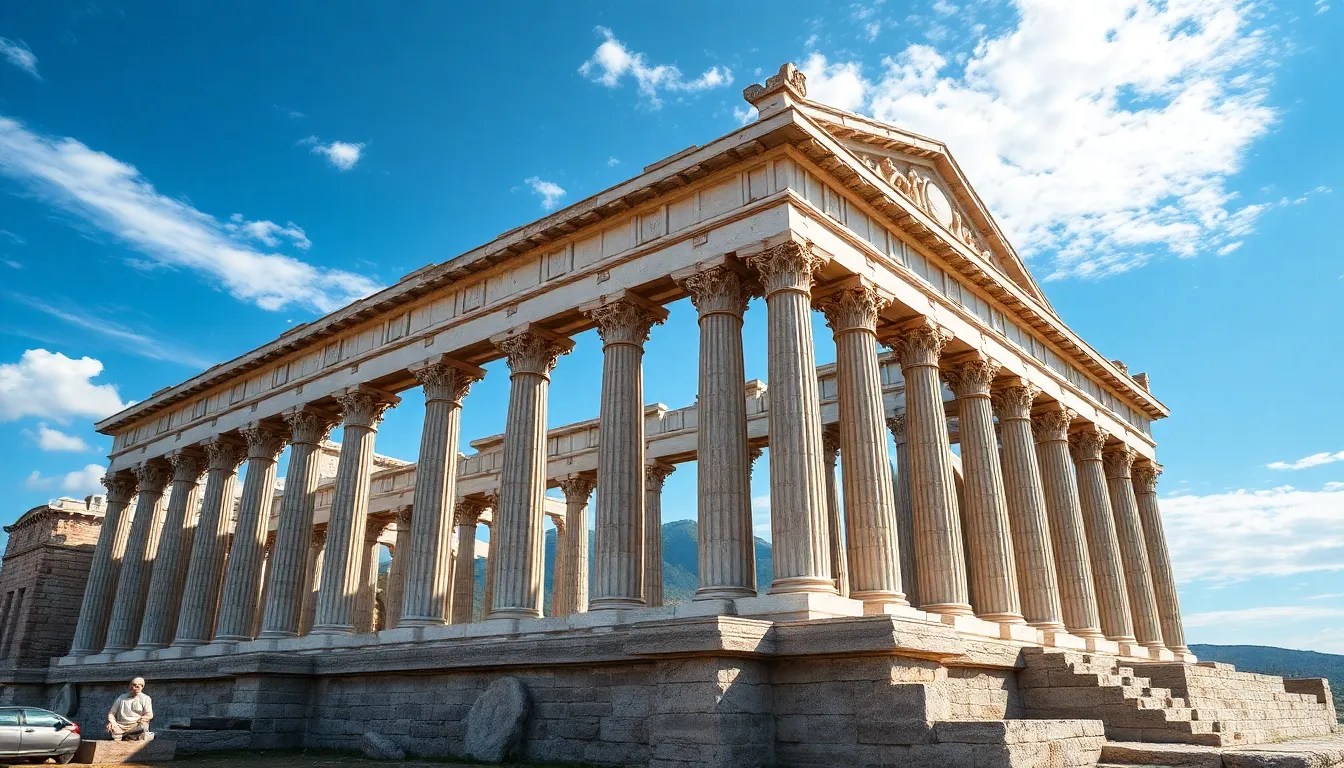Temples of the Gods: Architectural Wonders of Ancient Rome
I. Introduction
Roman mythology is a rich tapestry of gods and goddesses, each embodying different aspects of life and nature. The temples dedicated to these deities served not only as places of worship but also as monumental examples of ancient Roman architecture. These sacred spaces were integral to the spiritual and social life of the Romans, reflecting their beliefs, values, and artistic achievements.
In ancient Roman society, temples played a crucial role in religious practices and community gatherings. They were places where citizens could come together to honor their gods, seek divine favor, and participate in important rituals. This article aims to explore the architectural wonders of ancient Roman temples, highlighting their significance and the stunning craftsmanship involved in their construction.
II. The Importance of Temples in Roman Religion
Temples served as the epicenters of worship and community life in ancient Rome. They provided a space for the populace to engage in religious activities and celebrate festivals dedicated to their gods. The temples were not merely religious structures; they also symbolized the power and stability of the Roman state.
The relationship between architecture and religious practices was profound, as the design and layout of temples directly influenced the rituals performed within them. Key deities, such as Jupiter, Mars, and Venus, were honored in specific temples, each designed to reflect the attributes and myths associated with these gods. Some notable deities and their associated temples include:
- Jupiter: The Temple of Jupiter Optimus Maximus
- Venus: The Temple of Venus and Rome
- Mars: The Temple of Mars Ultor
III. Architectural Features of Roman Temples
The architectural features of Roman temples are characterized by their grandeur and attention to detail. Common design elements include:
- Columns: Often of the Corinthian or Doric order, these columns provided structural support and aesthetic beauty.
- Pediments: Triangular structures above the entrance that often displayed intricate sculptures.
- Altars: Central to worship, altars were where sacrifices and offerings were made to the gods.
The influence of Greek architecture is evident in Roman temple design, as the Romans adopted and adapted many Greek elements. However, the Romans also introduced innovations in construction techniques, such as the use of concrete and the development of the arch. These advancements allowed for larger and more complex structures, exemplified in masterpieces like the Pantheon.
IV. Notable Temples and Their Historical Significance
Several temples stand out in the annals of Roman history for their architectural brilliance and cultural importance:
- The Pantheon: Known for its magnificent dome and oculus, the Pantheon is a marvel of engineering and design. It remains one of the best-preserved monuments of ancient Rome.
- The Temple of Jupiter Optimus Maximus: This temple, located on the Capitoline Hill, was the most important temple in ancient Rome, dedicated to the king of the gods.
- The Temple of Venus and Rome: This grand structure exemplified the blend of mythology and architecture, dedicated to the goddess of love and the personification of Rome itself.
V. The Evolution of Temple Architecture over Time
The architectural style of Roman temples evolved significantly from the early Republic to the Imperial period. Early Roman temples were simpler in design, often resembling Etruscan structures. As Rome expanded and absorbed influences from conquered territories, temple architecture became more elaborate and sophisticated.
Political changes also influenced temple construction. For instance, emperors would often commission grand temples to legitimize their rule and honor the gods. The transition from pagan temples to Christian basilicas marked a significant shift in architectural priorities and religious practice, as many temples were repurposed or renovated for Christian worship.
VI. Preservation and Archaeological Discoveries
Efforts to preserve ancient Roman temples have been ongoing, with many sites undergoing restoration to maintain their historical integrity. Archaeological discoveries continue to provide insights into the construction and use of these temples. For example:
- Excavations have revealed the foundations and layout of long-lost temples.
- Artifacts found at temple sites have shed light on the rituals and daily practices of ancient Romans.
- Modern technology, such as 3D scanning and photogrammetry, aids in the study and reconstruction of temple architecture.
VII. The Cultural Legacy of Roman Temples
The influence of Roman temples extends beyond their time, impacting Renaissance architecture and modern buildings. Many structures, such as the U.S. Capitol and various neoclassical monuments, draw inspiration from Roman temple design. Additionally, these temples serve as significant tourist attractions, offering a glimpse into the grandeur of ancient Rome and its cultural heritage.
Artistic representations of Roman temples are prevalent in literature and art, symbolizing the lasting legacy of Roman culture. From paintings to sculptures, these representations continue to inspire artists and historians alike.
VIII. Conclusion
In conclusion, the temples of ancient Rome are more than mere architectural feats; they are reflections of the rich mythology and religious practices of the time. Their significance in Roman society and their architectural innovations have left an enduring impact on contemporary culture. As we explore the remnants of these sacred spaces, we gain a deeper appreciation for the artistry and devotion that defined ancient Rome.
We invite readers to further explore Roman mythology and its monumental architecture, uncovering the stories and meanings behind these magnificent structures.



